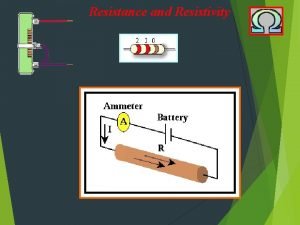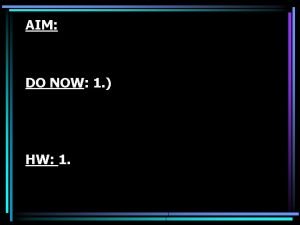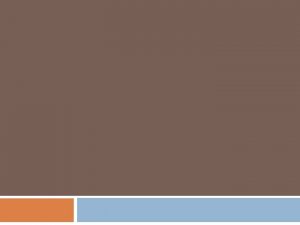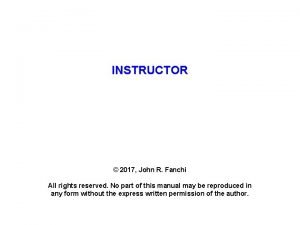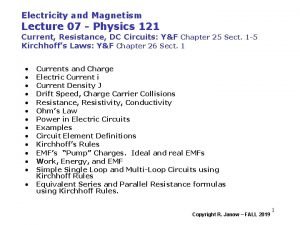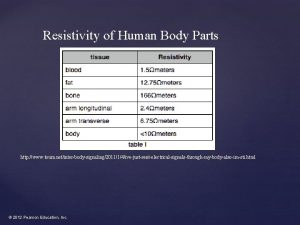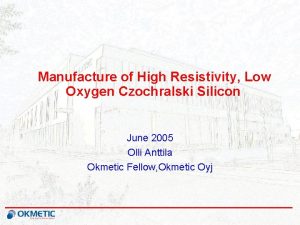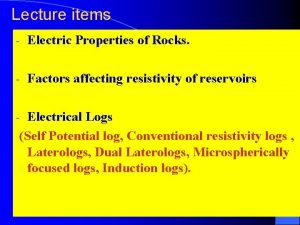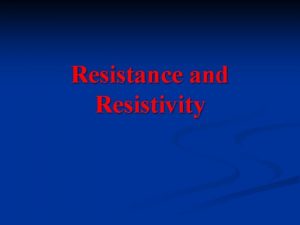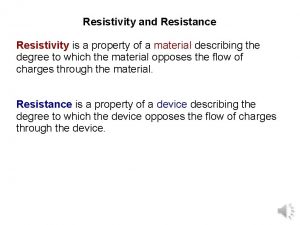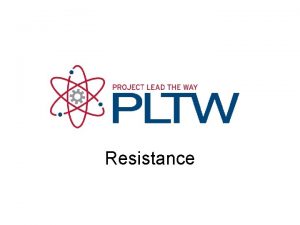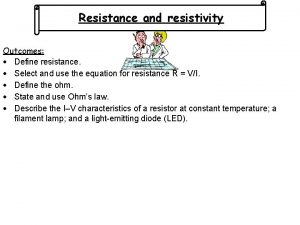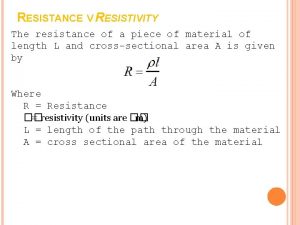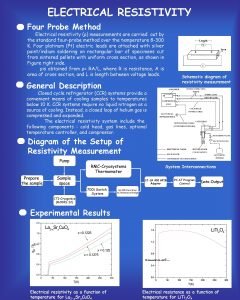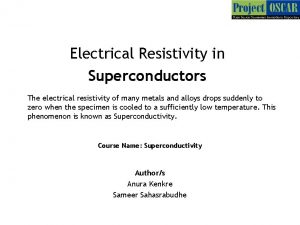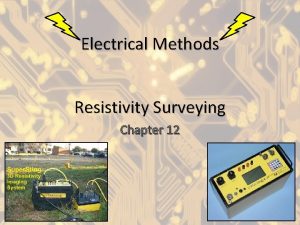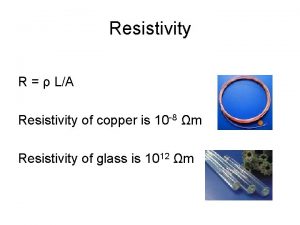Aim How does resistivity affect resistance Do Now












- Slides: 12

Aim: How does resistivity affect resistance? Do Now: The current flowing through a wire is 4 amperes. How many electrons pass a point inside the wire in 2 seconds?

Electrical Stopping Power Introduction to Resistance

Resistance: is a measurement of how strongly an object will oppose current An object’s resistance depends on FOUR factors: Resistivity Is specific to a material – the higher it is, the more natural resistance the material has. Cross-sectional Area How big is the object across? The wider it is, the more current it will allow to pass. Length How long is the object? The longer it is, the more it will oppose current flow. Temperature If the object is warm, the molecules inside will be bouncing around more – opposing current.

Equation R = resistance Unit for Resistance is the: OHM (Ω) • J. s/C 2 • Symbol: R +

Resistance in Conductors We would like to have conductors that allow CURRENT to flow from one place to another EASILY “IDEAL” conductor minimum RESISTANCE WIDE LONG HOT or or NARROW? or. SHORT? COLD? The “IDEAL” conductor has a COLDER conductors have lower resistance because: LOW RESISTIVITY and is atoms are not as energetic – don’t interfere with electrons WIDERSHORT, conductors have resistance WIDE, and SHORTER conductors havelower. COLD resistancebecause: electronsdohave room to pass! electrons not more have to travel as far!

Factors that affect resistance Length: Length Resistance Area: Area Resistance Temperature: Temp Resistance

Practice A copper wire has a length of 4. 00 m and a diameter of 2 x 10 -3 m. Assume a temperature of 20 C. a. What is the wire’s area? b. What is the resistivity? (Ω. m) Material Resistivity c. What is the resistance of the wire? Aluminum 2. 82 x 10 -8 Copper 1. 72 x 10 -8 d. Why specify 20 C? Gold 2. 44 x 10 -8 Nichrome 150 x 10 -8 Silver 1. 59 x 10 -8 Tungsten 5. 60 x 10 -8

Envelope Activity • Answer the following two questions regarding resistivity with a partner.

Example #1 • Calculate the electrical resistance provided by a piece of copper wire with a length of 1 meter and a cross sectional area of 0. 01 m 2.

Example #2 • Determine the composition of a wire with a resistance of 31. 8 Ohms if it is 5 x 107 meters long and has a cross-sectional area of 0. 025 m 2. SILVER

Graph relationships • Predict & SKETCH what he following graphs would look like. 1. R vs. L 2. R vs. A

SUMMARY • Which factors affect resistance? – How does each factor affect resistance? • How can you calculate resistance? • What are the units for resistance? • Describe an ideal wire with the LEAST amount of resistance

